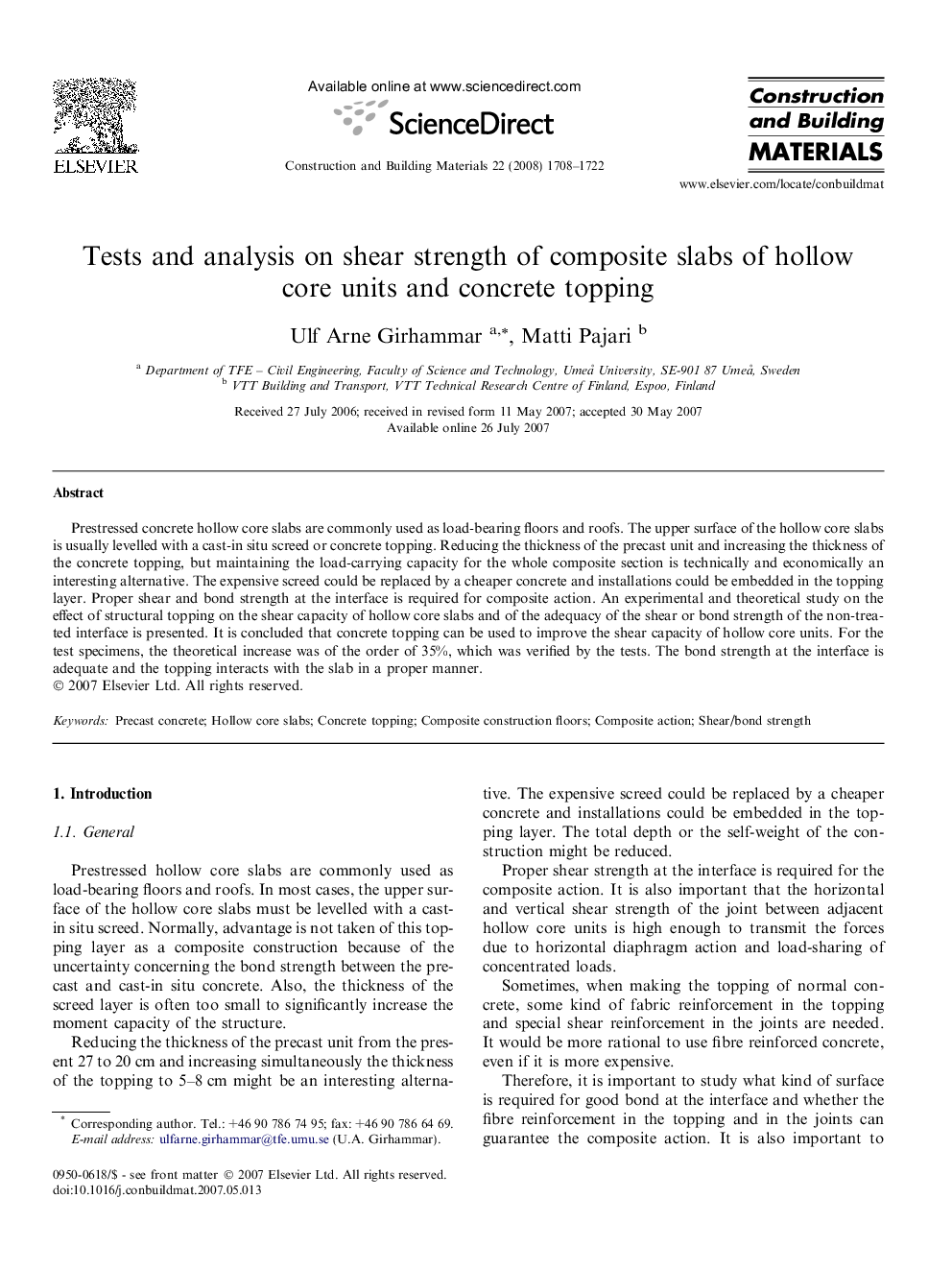| Article ID | Journal | Published Year | Pages | File Type |
|---|---|---|---|---|
| 260833 | Construction and Building Materials | 2008 | 15 Pages |
Prestressed concrete hollow core slabs are commonly used as load-bearing floors and roofs. The upper surface of the hollow core slabs is usually levelled with a cast-in situ screed or concrete topping. Reducing the thickness of the precast unit and increasing the thickness of the concrete topping, but maintaining the load-carrying capacity for the whole composite section is technically and economically an interesting alternative. The expensive screed could be replaced by a cheaper concrete and installations could be embedded in the topping layer. Proper shear and bond strength at the interface is required for composite action. An experimental and theoretical study on the effect of structural topping on the shear capacity of hollow core slabs and of the adequacy of the shear or bond strength of the non-treated interface is presented. It is concluded that concrete topping can be used to improve the shear capacity of hollow core units. For the test specimens, the theoretical increase was of the order of 35%, which was verified by the tests. The bond strength at the interface is adequate and the topping interacts with the slab in a proper manner.
